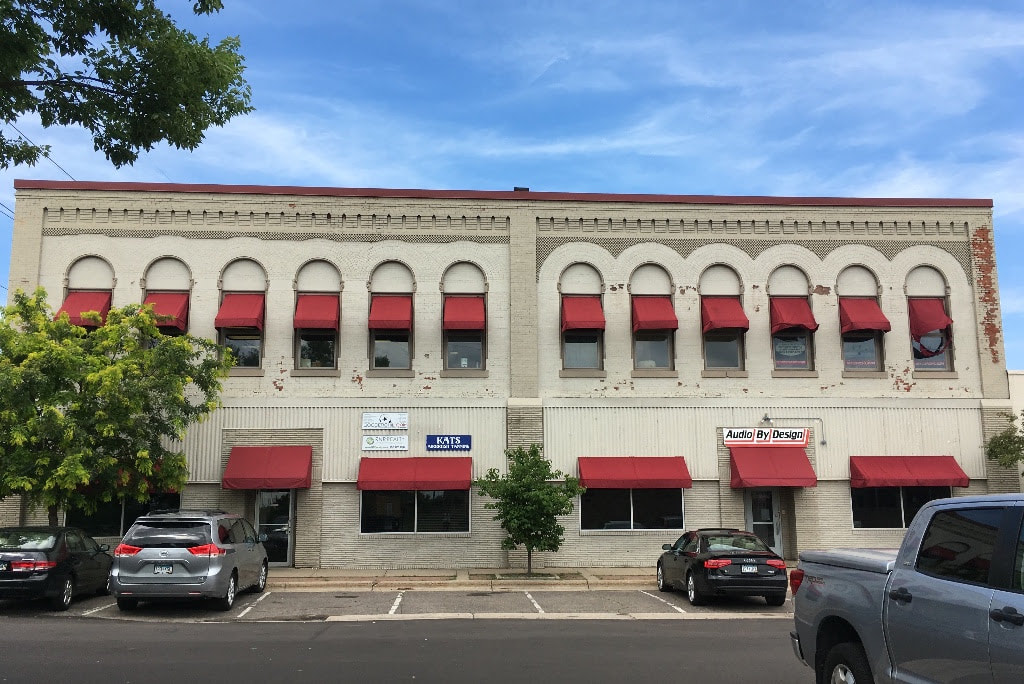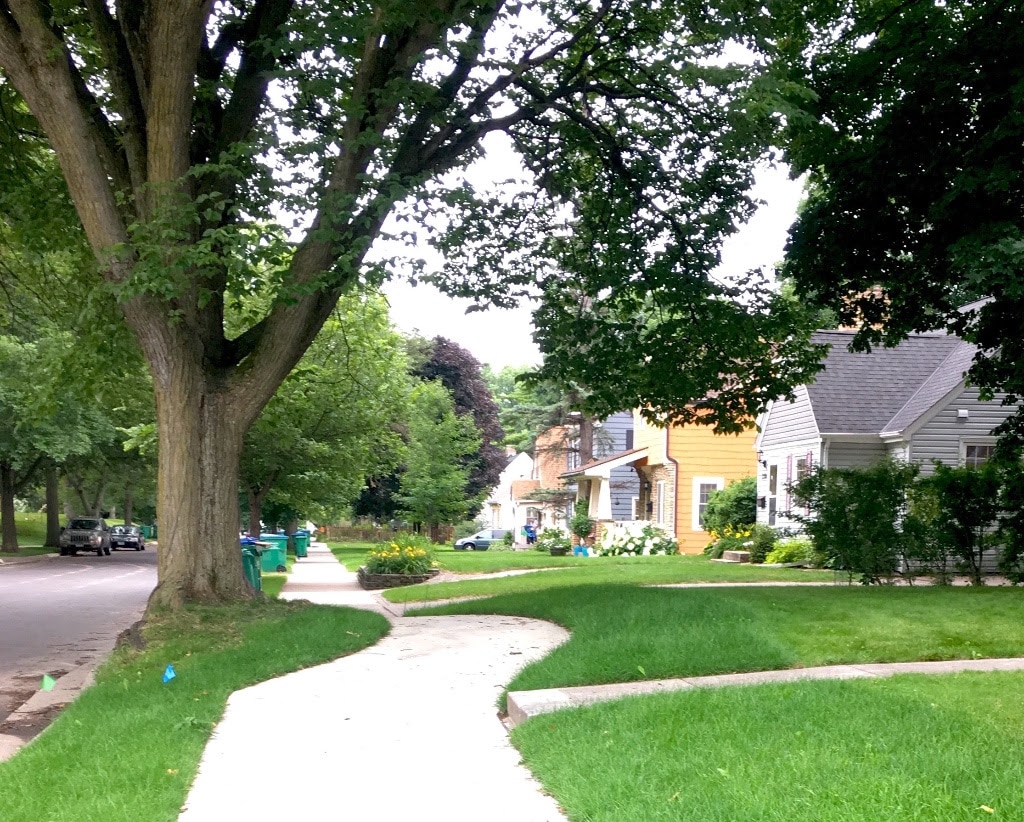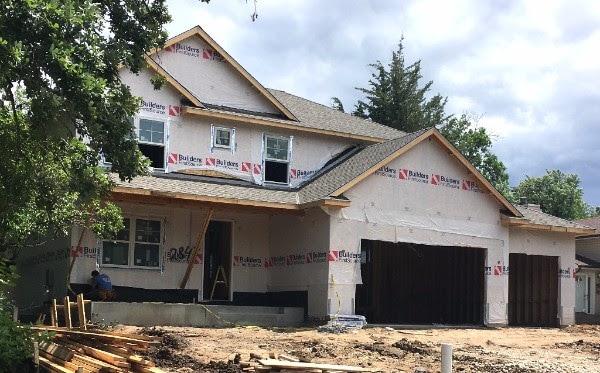|
|
|
The Walker Building, near Central Community Center, was built in 1892. The Elmwood. Parkway 25. Arlington Row. The Shoreham. PLACE.
Redevelopment is in full swing in St. Louis Park. More than a dozen new building projects are currently in progress or expected to start in the next few months. A look at our 2017 Report to the Community shows we’ll add nearly 1,000 new apartment units and 270 hotel rooms in 2017, along with more than 580,000 square feet of new office/commercial space. Full build-out at Central Park West, in The West End, will eventually add two more apartment buildings, two office buildings, a hotel, and a 2,534-stall parking ramp. From a revenue standpoint, we’re doing well; redevelopment brings in millions of dollars in taxes that enable us to maintain or expand our already great city services. Redevelopment can have negative impacts, too: more cars and congestion; less open space; fewer affordable housing units; fewer low-rent spaces for small businesses; and, potentially, a loss of the original charm and character of the community. With the introduction of Southwest Light Rail Transit (SWLRT) in the next few years, including three new stations in St. Louis Park, redevelopment is sure to change how our community looks and feels. In Ward 1, here are three areas to watch:
As your council member, I’ll advocate for an approach to redevelopment that:
What will our community look and feel like in ten years? Let’s decide now, and put preservation, design, and other guidelines in place that align with what we envision. Then let's thoughtfully, and slowly if needed, build our way into the future we want. What do you think? I welcome your ideas on redevelopment here. I grew up in a first-ring suburb that was a lot like St. Louis Park. The summer I was twelve, the city removed a tree in front of our house to make room for a sidewalk. I’d spent many happy hours sitting in the branches of that tree, looking out over the world. I was sad to lose it.
Ten years ago, St. Louis Park residents and leaders agreed on a goal to make our city more walkable and bike-friendly. Connect the Park, as the project became known, began in earnest in 2015. Since then, almost five miles of new sidewalks have been added, with eight more miles to go by 2023 (click here for a map of current and future projects). This project has resulted in the removal of trees. Some homeowners have also lost a portion of what they considered their yards, although in most cases it was public right-of-way. Still, Connect the Park has clearly had an impact on green and growing things in SLP, along with some homeowners’ sense of proprietary rights. In my conversations with Ward 1 residents, most—though not all—say they’re in favor of new sidewalks. Children’s safety is the reason people cite most often. But pedestrian safety overall is a concern for many. Between distracted drivers, speeding, and visibility issues, it can be unnerving to take a stroll down the block, let alone send kids out on their own. Overall, I think our city has done a good job implementing Connect the Park. City leaders have been responsive to residents, while staying true to the goal to create a more walkable city. I’ve seen stretches of sidewalk that wind around mature trees to save them. I’ve also learned that for every tree removed, our city plants one or more that total the circumference of the lost tree. I know that sidewalk plans have been revised, and in some cases shelved entirely, in response to resident feedback. It’s worth noting that while homeowners in nearby communities are assessed for new sidewalks in front of their homes, St. Louis Park homeowners are not. Sidewalks aren’t just good for children. A recent AARP survey reveals that eight in ten Americans prefer living in a community that offers sidewalks and pleasant places to walk. Other research shows that sidewalks reduce crime, increase property values, and build social capital. Safe, accessible, and well-maintained sidewalks are indeed a community benefit. Which brings us to the topic of maintaining our sidewalks. I’ve heard St. Louis Park residents who are seniors, and residents who have physical disabilities, describe the challenge of keeping their sidewalks clear of snow in winter. Through research and further discussions, I’ve come to believe that it’s an unfair burden to require every homeowner to clear the sidewalks around their home each time it snows, or risk a fine. Reliable volunteer help can be hard to find, and professional snow removal services can cost hundreds of dollars a season. I think we’re remiss in not addressing the financial burden mandatory sidewalk snow removal places on SLP seniors and others. Currently, our city clears about 45 percent of sidewalks in winter. I believe that if making our entire community pedestrian-friendly is a priority, then finding a practical, affordable, and equitable way to keep 100 percent of our sidewalks walkable, in all seasons, should be too. What do you think? I welcome your thoughts here. In the 40 years since a sidewalk was added in front of my parents’ Roseville home, a whole lot of people have enjoyed it. The sidewalk enriched my own and my parents’ experience of living in the house. Yes, we lost a beloved tree, and a stretch of grass too, but we gained a deeper connection to, and appreciation for, the people and the community we called home. We also gained a safe and inviting place to take many relaxing walks we may otherwise not have taken. It was, in the end, a good tradeoff. I predict we’ll feel the same way here. “I don’t want us to become another ….” In my conversations with Ward 1 residents, I’m hearing a lot of concern about teardowns and new home construction. While most people I’ve talked with understand the need to provide move-up housing for growing families who want to stay, they also worry about the impacts of large, new homes on small lots, both aesthetic and environmental. I share this concern. I believe we can find the right balance between encouraging development and preserving our sense of place, but to achieve this will require City leaders to be proactive. As your council member, I’ll advocate for the consideration of new residential design standards for St. Louis Park that govern things like maximum height of single family homes, minimum side setbacks, and limits on total lot coverage. I’ll also advocate for consideration of a limit on the number of wrecking permits we issue each year. Because we’re strict in our enforcement of building codes, most of St. Louis Park’s older homes are in good shape and, importantly - affordable. Let’s pause and reflect before we tear too many of them down. New construction can have significant environmental impacts too. When we add vinyl siding and concrete driveways, we lose pervious surfaces that absorb storm water and keep it from flowing into our lakes and streams. Often, we also lose mature trees. As a council member, I’ll advocate for the consideration of ordinances that require builders to replace trees they remove to build new homes, as well as other mitigation – for example installing rain gardens or native plantings instead of traditional grass. Our commitment to the environment and sustainability can be extended to this realm as well – why shouldn’t it? I’m glad St. Louis Park residents have a variety of housing options, and I’m glad many of my friends have found move-up housing that suits their needs and are still here. But being an elected official means being responsive to residents’ concerns, and clearly, the style and pace of new home construction in our community is a concern. So, no, let’s not become another (fill in the blank). Let’s continue to be St. Louis Park! |
Prepared and paid for by Rog for SLP City Council, 2817 Zarthan Ave. S., St Louis Park, MN 55416




 RSS Feed
RSS Feed